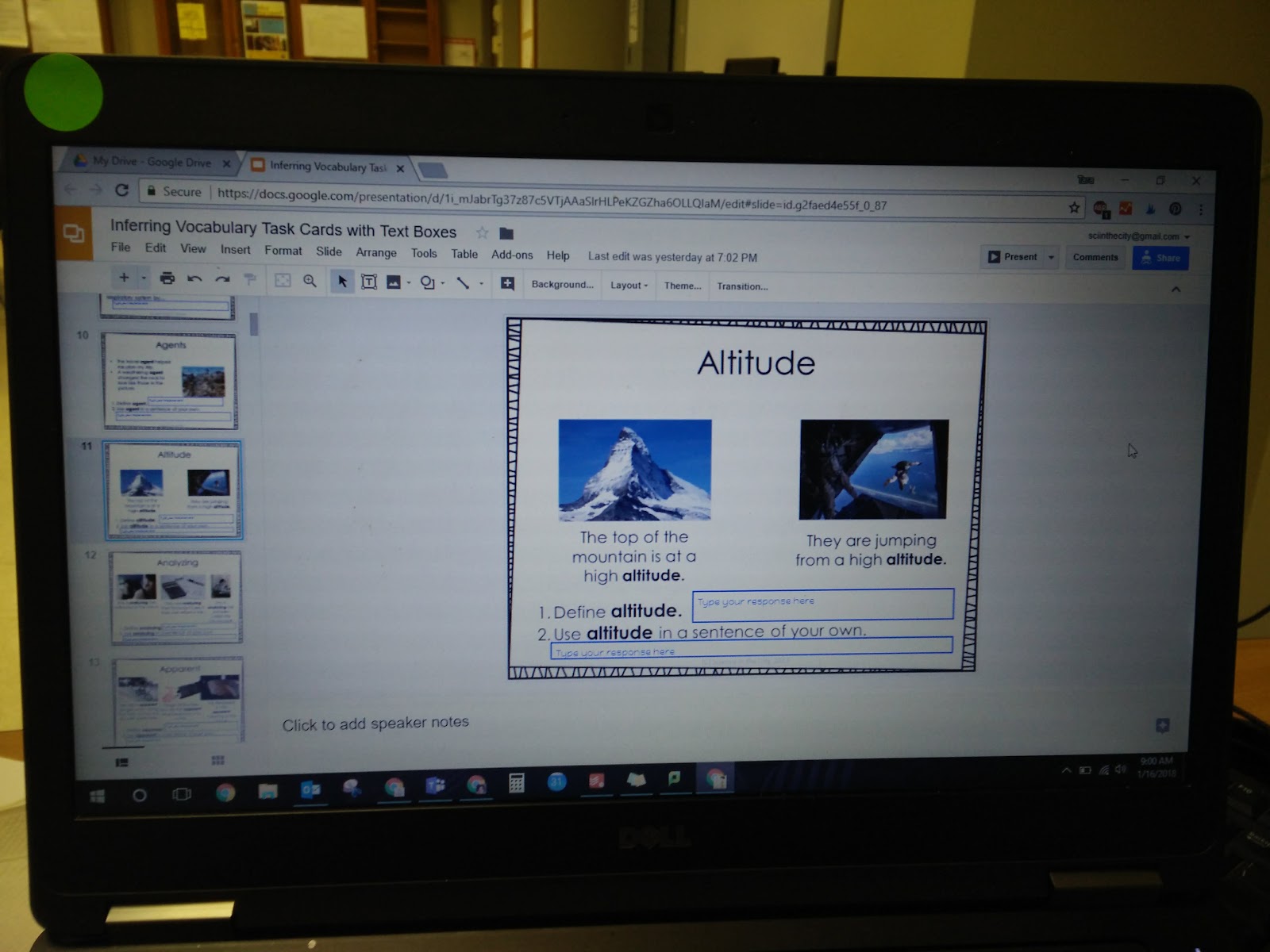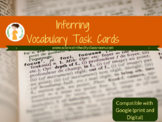My Students Know the Content -- Why Do They Test So Poorly?
You may have been taught and prepared to teach your students the content. You have spent time doing that, and you think they understand. Then you give them standardized test questions and they bomb, they shut down, or they keep calling you over very confused. How can this be? You thought you taught them this information?Sometimes it's not the content words that students are struggling with, but instead it's the non-content vocabulary or the Tier 2 vocabulary. In other words, they know the content but they don't understand the questions or they don't understand the reading passage. If they don't really understand what they are being asked, they can't begin to answer the question.
So many of our students don't have the background knowledge and vocabulary, they may be ELL students or they may just not have a lot of academic vocabulary.
So what can we do about this?
We need to teach our students this vocabulary! And to successfully teach vocabulary students need practice with those words in several different ways. Of course, this seem like an overwhelming task try to bring our students up to grade level with their vocabulary during science class or another content class but it doesn't have to be as difficult as it sounds. I have written about this before, but I was asked for more specifics on how I implement that strategies and vocabulary that I use.
I use those first for warm ups. Here are the basic steps that I follow:
I would usually do one word a day so five words a week and then after the end of the week or at the end of 2 weeks we would have a little quiz on those words. Sometimes it would just be a matching quiz, sometimes question that had one of those or a reading passage that had one of those words so they could see it in context.

After awhile, it was amazing, students started to learn some of the words but more importantly they started to gain confidence. When we do test questions where they would run across those words I would start to hear things like “Oh, I know this word!” “This is a word we just did last week.” They were not longer foreign, but were familiar instead. Even if they didn’t remember all the definitions, the vocabulary had lost its power to be scary!
Here is what I have done
Here is what I did to work on tackling that problem and I'm hoping it will help you too. I went through our last couple years of State exams as well as a few other resources and I compiled a list of Tier 2 vocabulary words. I also asked my students, as we did practice questions throughout the year, what words they didn't know or were confusing and added to the list. I also shared resources with a few other teachers. At that point I had a very good list of words.I use those first for warm ups. Here are the basic steps that I follow:
- I took a word a day, usually, and I gave them a sentence or a picture to infer, or comparison to another word.
- Then I had them try to conceptualize and infer what they thought the definition of the word was.
I would usually do one word a day so five words a week and then after the end of the week or at the end of 2 weeks we would have a little quiz on those words. Sometimes it would just be a matching quiz, sometimes question that had one of those or a reading passage that had one of those words so they could see it in context.
After awhile, it was amazing, students started to learn some of the words but more importantly they started to gain confidence. When we do test questions where they would run across those words I would start to hear things like “Oh, I know this word!” “This is a word we just did last week.” They were not longer foreign, but were familiar instead. Even if they didn’t remember all the definitions, the vocabulary had lost its power to be scary!
What's the Next Step
It's so important that these are integrated in throughout the year and the students practice using them so that it's not an isolated thing. To facilitate this, when we did stations for other topics (I do a lot of stations in my classroom) I usually throw in one extra station to focus on those vocabulary words. It might be the same thing as what is on the board, as a review, but a few task cards printed out. It could be matching up words and definitions either on paper or on Quizlet. Sometimes the station would focus on vocabulary more subtly because it would ask them to write a test question using some of those words (maybe with a word bank or sentence stems). It's so important that they see these over and over again so that they lose their fear and mystery.
This is something that you could easily implement on your own but if you would like to make it easy, my complete set of over 200 words (more than enough to use one every day) they're available here

Here are a few of the pieces of feedback I have gotten on this resource. I hope it can be helpful to you as well!
I also wrote more about this strategy in these other posts, here, here, here, here, and here.
Where Can I Find Out More
More strategies are outlined in this great article 8 Steps to Tier 2 Academic Vocabulary in Your Students and here Enriching Academic Vocabulary: Strategies for Teaching Tier Two Words to E.L.L. Students.This is something that you could easily implement on your own but if you would like to make it easy, my complete set of over 200 words (more than enough to use one every day) they're available here
Here are a few of the pieces of feedback I have gotten on this resource. I hope it can be helpful to you as well!
I also wrote more about this strategy in these other posts, here, here, here, here, and here.









